Winter
TEEN WALKING
AFTER SPINAL INJURY Therapy Team Aids in Recovery
WHEN FATIGUE IS SERIOUS From Active Lifestyle to Heart Surgery

WAKE-UP CALL –YOU’RE HAVING A STROKE Don’t Ignore Subtle Warning Signs
ASK THE EXPERT
What Careers are Available in Healthcare?
CEDAR RAPIDS
unitypoint.org
2023
WHAT’S INSIDE
1 Health Clips
Health news you can use.
2 Wake-up Call – You’re Having a Stroke
A Monticello woman shares her story to help others recognize stroke symptoms.
4 When Fatigue is Serious Heart blockages are discovered after a Cedar Rapids man’s active lifestyle is slowed, leading to open heart surgery.
6 Second Opinion Offers Alternative to Open Heart Surgery
An Iowa man receives a minimally invasive treatment from Cedar Rapids’ Heart Hospital experts.
8 Heart Procedure Stops Blood from Leaking into Lungs MitraClip repairs leaky heart valve without surgery.
ST. LUKE'S HEART & VASCULAR CENTER EXPANDS FOR YOU
In response to the growing number of people who need St. Luke’s specialized heart and vascular services, St. Luke’s expansion project will increase capacity and enhance workflow. That means more patients will receive the cutting-edge heart and vascular care they’ve come to expect from St. Luke’s. The $25 million project continues on-time and on-budget, and encompasses three phases:
2023 – PHASE 1
Adding a Second Electrophysiology Lab, for treatments such as:
• Pacemakers
• Implantable defibrillators
• Ablation procedures to correct heart rhythm (Afib)
2024 – PHASE 2
Adding a third Vascular and Interventional Radiology (IR) Lab and dedicated heart prep and recovery areas. The Vascular and IR lab performs and treats:
• Imaging and biopsies
• Aneurysms (ballooning vessels)
• Revascularization (restoring blood flow to blocked vessels)
2024 – PHASE 3
Focusing on Structural Heart by adding a large hybrid operating room with state-of-the-art imaging near Heart and Vascular Operating Rooms and ICU. Structural Heart refers to:
• Defects and disorders of the heart’s structure
Winter 2023
• Valve repair/replacement via catheter (e.g., TAVR and MitraClip, both of which St. Luke’s introduced to Cedar Rapids)
What careers are available in healthcare?
For Your Health Timely health and medical news. Copyright® 2023 UnityPoint Health. All Rights Reserved® ℠trademarks of UnityPoint Health. LiveWell magazine is produced by UnityPoint Health® P.O. Box 3026 | Cedar Rapids, IA 52406 (319) 369-7395 | unitypoint.org
10 Teen Walking After Spinal Injury St. Luke’s Physical Medicine and Rehabilitation team aids in recovery after an acute spinal cord injury. 12 Ask the Expert
13
Follow our expansion progress at unitypoint.org/heartcare
ST. LUKE’S HEART SAVER PROGRAM AIMS TO SAVE LIVES

St. Luke’s Hospital, through its Heart Saver Program, is giving away 50 automated external defibrillators (AEDs) and 100 Stop the Bleed first aid kits to area first responders, ambulance crews and nonprofit organizations in Benton, Jones and Linn counties. The program is supported by St. Luke’s Foundation and is an effort to place AEDs and trauma first aid kits into the community, to save lives through early intervention of cardiac arrest and traumatic injuries.
Sudden cardiac arrest is a life-threatening condition caused by the unexpected loss of heart function. According to the Centers for Disease Control and Prevention (CDC) and the American Heart Association (AHA), 70 percent of cardiac arrests occur outside of the hospital, and 70 to 90 percent of those individuals die before reaching the emergency room. Alternatively, nine out of 10 cardiac arrest victims who receive a shock from an AED in the first minute live.
In the event of a traumatic injury, a person can die from blood loss within minutes. Stop the Bleed is a national movement, which educates and arms bystanders to address a bleeding emergency before professional help arrives.

St. Luke’s is Cedar Rapids’ Heart Hospital. The program aims to honor St. Luke’s Heart Care team’s commitment to saving lives and raising awareness around matters of the heart. To learn more, visit unitypoint.org/HeartSaverProgram
NEED CARE? TRY SMARTEXAM
With cold and flu season in full swing, UnityPoint Clinic offers two convenient ways for patients to receive care.
Adults in Iowa can spend less time waiting in-person for care and get treatment for common ailments and illness like the flu, cold, allergies or urinary tract infections through its virtual care option, SmartExam, or by scheduling a Virtual Urgent Care visit.
Both online care options are available in MyUnityPoint and work on any smartphone, tablet or computer.
Through SmartExam, patients pay a flat $30 fee and receive a diagnosis and treatment options from a trusted UnityPoint Health provider in less than an hour.
SmartExam and Virtual Urgent Care are available in MyUnityPoint every day from 8 a.m. to 8 p.m. for adults in Iowa.
Need or want to be seen in-person? Patients can reserve a spot at UnityPoint Clinic Urgent Care and Express clinics, as well as schedule same-day appointments with their primary care provider. Same-day appointments are released daily in MyUnityPoint, making it easier for patients to schedule a visit and spend less time waiting for care.
For more information on all virtual care options, scan our code.
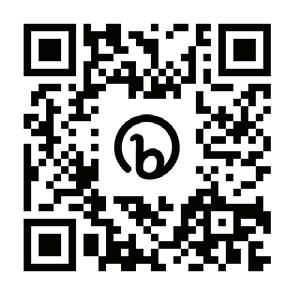
LEARN: HANDS-ONLY CPR
We’ve heard it for years – CPR saves lives. Last month the world watched as it saved the life of NFL football player Damar Hamlin, who went into cardiac arrest during a nationally televised game.
He received CPR from the medical team, along with an AED, saving his life.
Would you know what to do if someone suffered cardiac arrest? Do you know CPR?
St. Luke’s is a sponsor of the American Heart Association (AHA) and is a long-time supporter of the annual Go Red for Women event. We invite you to learn CPR. Visit bit.ly/CPRHandsOnlyAHA to learn hands only CPR — watching it today could help you save a life in the future.
If you want to learn more about CPR classes at St. Luke’s Work Well Solutions, call (319) 861-6848.
LiveWell Winter 2023 | 1 HEALTH CLIPS
SCAN ME
St. Luke's Foundation is donating AEDs like this to restore hearts when someone is experiencing cardiac arrest.
WAKE-UP CALL: YOU’RE HAVING A STROKE
Sharon Roller of Monticello has an important message: pay attention to changes in your health. Even subtle changes can signal big problems. She also admits it’s important to listen to your loved ones when they notice changes in your health. She remembers a phone call with her daughter Christine Engwall, who works at a hospital in Fairfield, which is about two hours away and dismissing her repeated instructions.
“I had the worst headache of my life for a couple of days,” explained Roller. “I called my daughter and asked her what I should do. She told me to go to the hospital. But I didn’t listen. I decided to take Tylenol instead.”
“I am a nurse,” explained Engwall. “But my mom is also a nurse. She worked at Camp Courageous for 40 years and retired within the last year. During our reoccurring phone calls, she wasn’t acting like herself. She seemed confused and kept repeating herself. Each day we would talk I would encourage her to go to the ER. But she brushed it off and said she would take more Tylenol and lay down. She did this for several days.”
After several days of worsening symptoms, including balance issues, Roller finally realized something was wrong. She went to
tell her husband Ed, who was outside taking care of livestock on their farm. She got into her car and drove to find him when she ran into a calf hut. Roller hadn’t seen it. Ed rushed her to UnityPoint Health – Jones Regional Medical Center in Anamosa.
Stroke Alert Protocol
“Sharon was having a stroke,” explained Gregory Blythe, DO, UnityPoint Health – Jones Regional Medical Center (JRMC) Emergency Department medical director. “Her presentation was not necessarily the classic stroke signs such as the slurred speech or facial droop but she did have symptoms. She was off balance and had partial vision loss out of the left half of her eyes. She had what we call neglect where she didn’t realize she wasn’t seeing out the left side until we identified it for her.”
JRMC has a stroke alert protocol, which is similar to what is used at St. Luke’s Hospital. When someone comes to the ER with any stroke symptoms, there is a series of steps aimed at rapidly diagnosing and treating a patient who may be having a stroke.
“The sooner you go to an ER the better,” explained Dr. Blythe. “In some cases when someone is having a stroke, we can offer

2 | unitypoint.org
HEART AND VASCULAR
Sharon Roller (center) attended the American Heart Association Go Red for Women lunch in Cedar Rapids with her daughter Christine (left) and mother Pauline. Stroke and heart disease run in their family. Roller shared her story at Go Red to educate attendees on the signs of stroke. St. Luke’s is proud to be the presenting sponsor of this event since it started in 2004.
special treatment including tPA (tissue plasminogen activator), which is a medicine that breaks up the clot causing the stroke. It’s not recommended for all strokes but for those it’s appropriate for, there’s a small window of time after the initial symptoms start for patients to take the medication.”
“I couldn’t believe I was having a stroke,” explained Roller. “I could walk and talk normally. My speech wasn’t slurred. All my symptoms happened gradually over the course of several days.”
Call 911 at the First Sign of Stroke
“It’s good Sharon went to JRMC when she and her family realized something more was occurring,” said Dr. Blythe. “It’s important when individuals are having a stroke or some other medical emergency that they call 911 or go to the closest hospital. Rural hospitals like JRMC can provide acute management and transfer you to a larger facility if needed, which is what we did for Sharon.”
BALANCE
“I went to St. Luke’s by ambulance and spent the next month recovering and participating in physical and occupational therapy,” shared Roller. “When I left St. Luke’s, I continued my therapy at Jones Regional. The care all the way around was wonderful. I am getting better, but my left side is still significantly impacted. My vision has not returned. I see only half of things. For example, if you see the number eight, it looks like a three to me. Looking back, I should have paid closer attention because stroke and heart disease run in my family. The stroke was impacting my thought process and I wasn’t thinking clearly. I want other people reading this article and their family members to know the symptoms of stroke and if you have any of these signs go to the hospital when someone tells you to. Don’t be reluctant like I was. I count my blessings and I am going to keep working on getting better and not going to give up.”
Stroke is a medical emergency. Call 911 or go to the nearest hospital if you or someone you are with is experiencing symptoms of stroke.
Lost
Does the person have a sudden loss of balance, coordination or dizziness?
TIME
To Call 911
Call 911 immediately if you see any of these symptoms!
SPEECH Difficulty
Is their speech slurred or mumbled?
Know the warning signs of stroke and B.E.F.A.S.T
EYES Blurry
B E F T A S
Have they lost vision in one or both eyes?
FACE Drooping
ARM Weakness
Is one arm weak or numb?
LiveWell Winter 2023 | 3
TIME LOST IS BRAIN LOST.
BEFAST
Does one side of the face droop or look uneven? 9-1-1
WHEN FATIGUE IS SERIOUS
In the spring of 2022, Brett Medema of Cedar Rapids started to become exhausted whenever he exerted himself during his usual exercises. He’s an avid biker who can normally bike up to 40 miles, but he was having difficulty completing 10.
As his biking mileage decreased, other activities were becoming difficult as well. During his annual physical the 56-year-old was diagnosed with high blood pressure and elevated cholesterol. His doctor prescribed blood pressure medicine.
“First it was the decreased endurance with biking and then I noticed I was struggling to mow our yard,” explained Medema. “Anytime I would exert myself, I would get winded, the muscles in my upper back would get tight and I would have to sit down. I attributed it to the medication I was taking, assuming it was a side effect.”
Last September, Medema was gathering garbage when he was hit with extreme back pain. A short time later he started experiencing chest pain and cold sweats.

4 | unitypoint.org
HEART AND VASCULAR
Brett Medema is happy to resume one of his hobbies of modifying his Jeep Wrangler. The Cedar Rapids man had open heart surgery at St. Luke’s last fall.
“It felt similar to other episodes I’d had before but this time I wasn't exerting myself,” Medema explained. “This episode lasted about 20 minutes. Later that night in bed, I started feeling the same way, and my wife rushed me to the hospital.”
At St. Luke’s Emergency Department, doctors discovered the blood vessels leading to Medema’s heart were blocked. He was diagnosed with coronary artery disease. This is caused by plaque build-up in the wall of the arteries that supply blood to the heart. According to the Centers for Disease Control and Prevention (CDC) plaque is made up of deposits of cholesterol and causes the arteries to narrow. Over time, it can partially or totally block blood flow.
Emergency Open Heart Surgery
Medema was told he needed emergency open heart surgery, and he was scheduled for the following morning.
“Brett had a four-vessel coronary artery bypass grafting surgery,” said Garry Weide, DO, St. Luke’s cardiothoracic surgeon. “Everything went well. He made a nice recovery and continues to do well at home.”
Open heart surgery or coronary artery bypass graft surgery (CABG) is a surgical procedure performed to reduce the risk of death from heart disease. Arteries or veins from elsewhere in the patient’s body are grafted to the coronary arteries to bypass blockages or narrowed arteries and improve blood circulation to the heart. According to Dr. Weide, St. Luke’s Heart team uses arteries from the forearm in bypass surgery whenever possible because they typically result in better long-term outcomes for patients than using vein grafts.
St. Luke’s is Cedar Rapids’ Heart Hospital, performing the area's first open heart surgery in 1978. Its leading heart program recently received national recognition from the American College of Cardiology (ACC) in U.S. News and World Report as a hospital that implements high standards in patient care and protocols to ensure the best cardiovascular outcomes for patients.
Lifestyle Changes
Medema is participating in cardiac rehab three times a week, which he says is helping tremendously. He’s always kept a healthy lifestyle by not smoking and trying to eat healthy by
avoiding fast food, soda and caffeine, and now he’s doubling down on his commitment to living well. He has made a stricter diet for himself – eating more fresh fruits and vegetables. He has further cut down on his salt intake, and exercises 30 minutes a day. His strength and stamina continue to improve, and he looks forward to resuming some of his favorite activities – biking, golfing and lifting weights — within the next few months.
Medema has extreme gratitude for the health care he received at St. Luke’s.
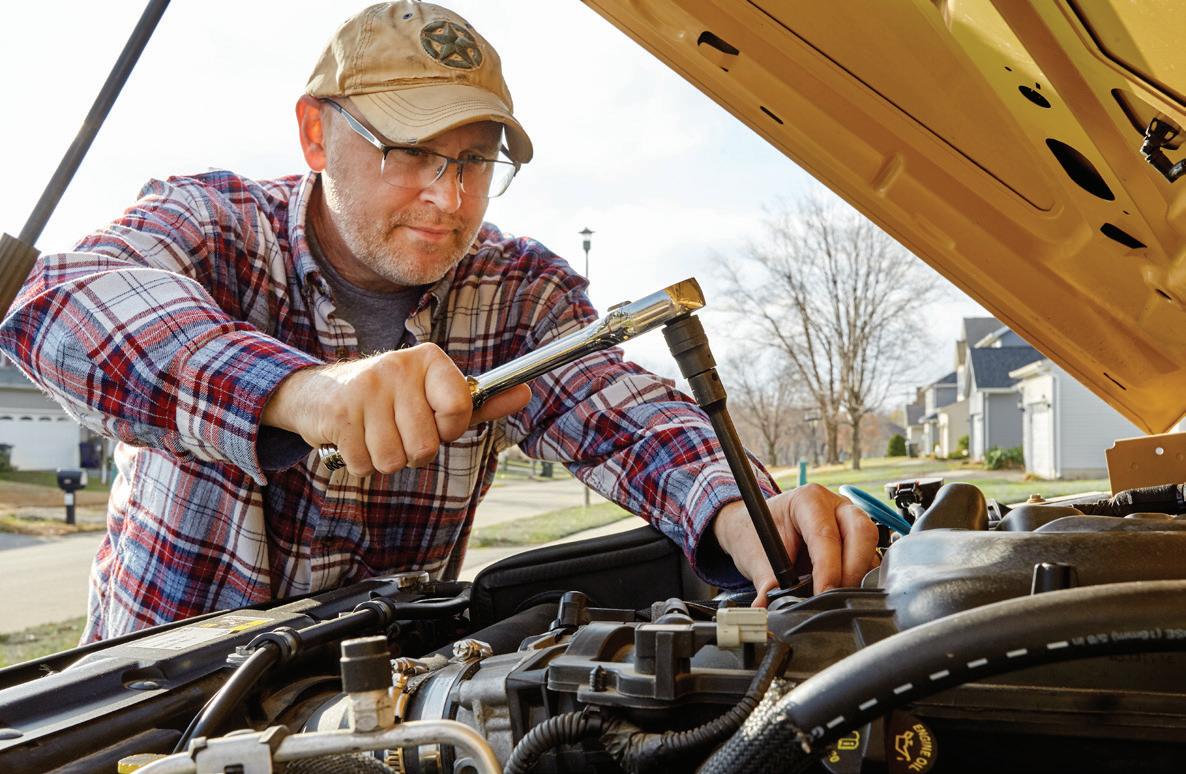
“Everyone at St. Luke’s has been amazing during this entire ordeal,” he said. “They made me feel like they genuinely care about my health and wellbeing. Even the folks who delivered food to my room were incredibly nice. I can't say enough about the care I had in the hospital and continue to receive.”
Learn about plaque build-up before symptoms occur. St. Luke’s offers a Heart Scan, which is when a computed tomography (CT) machine takes X-ray pictures of your heart and detects plaque in the arteries, creating a number called a calcium score. This number determines your heart disease risk and helps your doctor work with you to decide what steps you can take to avoid serious heart issues.
The Heart Scan is for men and women between the ages of 40 and 70. A doctor’s referral is needed. Call today to schedule your heart scan at (319) 369-8909.
WATCH OPEN HEART BYPASS SURGERY
St. Luke’s has the largest and most comprehensive heart care program in Cedar Rapids. It’s the leader in performing open heart surgery.

Scan the code and watch as our experienced heart care team performs open heart surgery in one the hospital’s operating rooms.

LiveWell Winter 2023 | 5
Garry Weide, DO Cardiothoracic Surgeon
SECOND OPINION OFFERS ALTERNATIVE TO OPEN HEART SURGERY
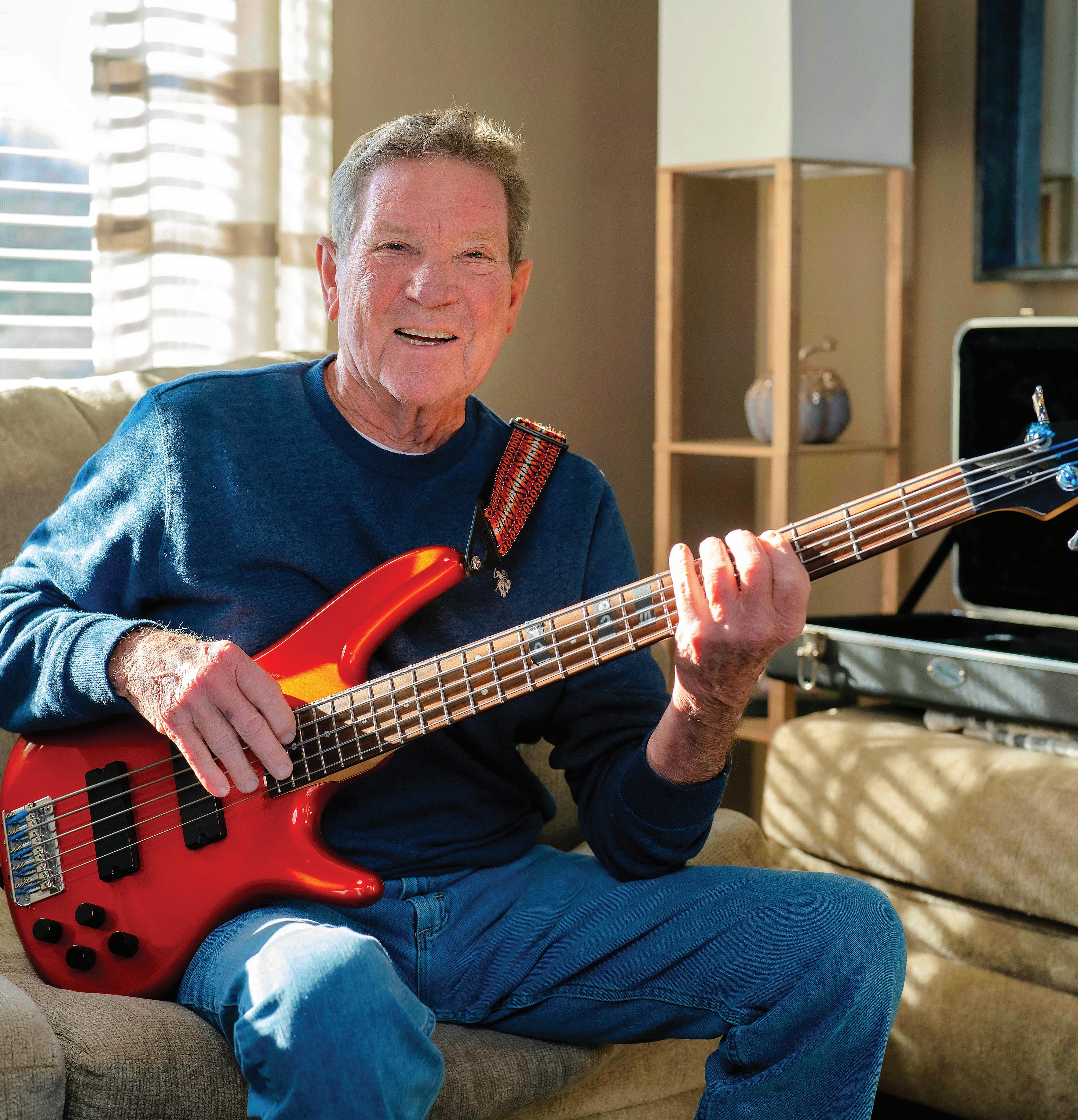
6 | unitypoint.org HEART AND VASCULAR
Don Wagner sought a second opinion from St. Luke’s Heart Care Clinic and received less-invasive treatment for his heart blockages. He recovered more quickly and returned to farming and rocking his bass guitar.
In his 80s, Don Wagner and his wife, Melody, still actively work on their 700-acre corn and soybean farm. Recently, Wagner was told he needed open heart surgery, and he was understandably concerned for his health as well as his fields.
“All I could think about is who’s going to plant my crops,” Wagner recalled. “I wondered how I would get everything done and worried I would have to stop farming and rent out my land.”
Wagner’s family has a history of heart trouble. His father died from a heart attack at age 49, and he had several uncles die from heart issues in their mid-60s and early 70s. Because of this, he and his siblings keep up with routine physicals and take advantage of any opportunity to monitor their health. When Wagner read about a screening event happening near his hometown of Bode, Iowa, he signed up.
“They do a series of tests to check your heart health and arteries,” Wagner explained. “I was shocked when they said they detected blockages and suggested I see my doctor. I ended up being sent to several different hospitals for an EKG and other tests, and they said I needed bypass heart surgery.
“Within a couple of weeks, I had a date set for surgery,” he continued. “But my daughter Shannon, who is CEO of Ronald McDonald House Charities of Eastern Iowa and Western Illinois, said there’s a ‘heck of a heart team’ at St. Luke’s in Cedar Rapids, and she suggested I get a second opinion.”
Home the Same Day after Treatment
“Don was feeling tired and short of breath, which was unusual for him as an active person,” said Wassef Karrowni, MD, St. Luke’s structural and interventional cardiologist. “We reviewed his angiogram from one of the other hospitals and confirmed he had multiple, significant blockages. He also had extra heart beats, which were unrelated and would need another specialist to treat.
“Coronary artery bypass surgery would have been an option for the blockages,” Dr. Karrowni acknowledged. “But based on his anatomy, I believed it was better to place stents. First, it’s less invasive, and second, in his situation, the outcome would be as good as surgery. We ended up placing multiple stents, in one setting, and he went home the same day.”
To address Wagner’s heart rhythm problems, Dr. Karrowni referred him to Talha Farid, MD, St. Luke’s electrophysiologist, a specialty cardiologist with additional training to diagnose and treat electrical issues of the heart.
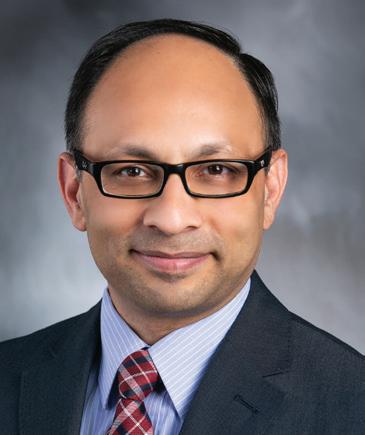
“After discussing the options with Don and his family, we ultimately decided to perform an ablation,” said Dr. Farid. “Ablation is a heart procedure that removes irritable spots in the heart by using either radiofrequency (heat) or cryoablation (cold). We do what’s called ‘mapping,’ which means we use an electromagnetic system in conjunction with our catheters to determine what spots need to be treated.”
Rock-n-Rolling in the Field
Talha Farid, MD Electrophysiologist
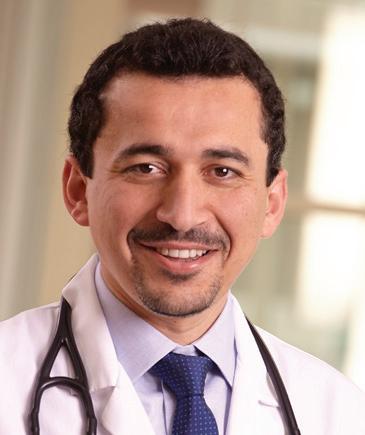
To say Wagner is active is an understatement. In addition to farming, he also plays bass guitar and blues harmonica for the Nedd Freeley Funn rock n’ roll band. Last summer they performed nearly 20 gigs across the Midwest. He also loves sports and said he ‘retired’ from playing softball at age 81, only because COVID brought his league to a halt.
“I have a lot more stamina now,” Wagner affirmed. “I used to want to fall asleep in the middle of the day. I’m not as tired, and I’m less dizzy. And it’s fun to feel my pulse. I went in with a 31 heartbeat and came out with a 62. It just clicks along beautifully.”
Because Wagner was proactive about his heart health and sought the experience of St. Luke’s Heart Care team, he was able to receive less-invasive treatment and avoid open heart surgery. Dr. Karrowni suggests everyone be as diligent.
“As we get older, we assume our health issues are due to age, especially if they build up slowly,” he said. “It’s important to take symptoms seriously. They don’t have to be chest pain or heaviness or very short breath – if something’s out of the ordinary, and it persists or gets worse, it’s best to get checked out.
“Cardiac care has advanced quite a bit over the years,” Dr. Karrowni continued. “We can do a lot of minimally invasive procedures where patients go home the same day.”
St. Luke’s is Cedar Rapids’ Heart Hospital and is known for advanced, innovative cardiac care. For more information about St. Luke’s Heart Care, and to learn about the heart and vascular expansion project currently underway to serve more patients, visit unitypoint.org/heartcare.
LiveWell Winter 2023 | 7
Wassef Karrowni, MD Interventional and Structural Cardiologist
HEART PROCEDURE STOPS BLOOD FROM LEAKING INTO LUNGS

8 | unitypoint.org
HEART AND VASCULAR
Pam Brown enjoys shopping for antiques, which she was able to resume after she underwent a MitraClip procedure to fix a leaking heart valve. The MitraClip is only available in Cedar Rapids at St. Luke’s Heart & Vascular Center.
“It started with a strange feeling in my upper stomach,” said Pam Brown, 75, of Olin, Iowa. “Something didn’t feel right, and I knew I had to be seen.”
Earlier this year, when Brown arrived at UnityPoint Health - Jones Regional Medical Center (JRMC) Emergency Department, the pain she was feeling was much more serious than a stomach issue. The emergency physician recognized Brown’s symptoms and consulted Cardiologist Ojas Bansal, MD, who was stationed at St. Luke’s Heart Care outreach clinic in Anamosa, at JRMC. He ordered an urgent echocardiogram, which showed Brown had a serious problem with her heart. She required an immediate transfer to UnityPoint Health – St. Luke’s Hospital.
“I kept telling them it was my stomach, but they were really concerned with my heart,” recalled Brown. “They were moving fast and told me I had to go to St. Luke’s for what they thought was a heart valve problem.”
Heart Unable to Pump Blood to Organs
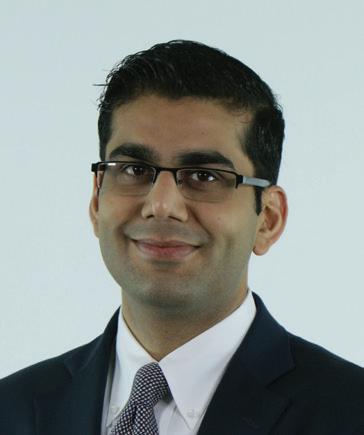
Before she arrived, Brown lost consciousness. She doesn’t remember the drive, arriving at St. Luke’s ER, nor being transported directly to the Intensive Care Unit (ICU). Brown’s heart was in cardiogenic shock.
“Cardiogenic shock is life-threatening,” said Wassef Karrowni, MD, St. Luke’s interventional and structural cardiologist. “Cardiogenic shock means the heart is not able to pump hard enough to circulate oxygenated blood to the organs. These are some of the sickest patients we see in cardiology; mortality rate for cardiogenic shock is high. Usually, it results from heart attack, but this case was unique – it was caused by a leaky heart valve.”

As soon as the heart care team stabilized Brown’s condition, they transported her to the cath lab. There, they found non-emergent blockages in two of her arteries, but more critically, they confirmed she had a badly leaking mitral valve.
“The mitral valve connects the lower left chamber of the heart to the upper left chamber,” Dr. Karrowni explained. “It has two
leaflets to control blood flow. In Ms. Brown’s case, one of the leaflets started buckling backward, into the upper chamber, which caused blood to backup into her lungs and affect her ability to breathe.”
MitraClip at St. Luke’s was Only Option
Brown was not a candidate for open heart surgery because of her age and various other health conditions. She required a specialty procedure called the MitraClip, which is performed by structural cardiologists who are only available in Cedar Rapids at St. Luke’s Heart & Vascular Center.
The MitraClip attaches to the leaflets of the mitral valve to help them close properly. The procedure involves making an incision in the groin and using a catheter to deploy the device.
“Usually we see patients in the clinic and pre-schedule the Mitraclip,” said Dr. Karrowni. “In this situation, it was an urgent MitraClip, which is not very common, and it was our only option. The procedure is less invasive than open heart surgery and requires significantly less recovery time. Ms. Brown was up and walking the next day.”
Brown also received two stents to open the blockages in her heart. Afterward, she participated in Cardiac Rehab at JRMC, and today, she attends a regular exercise program. Brown credits cardiac rehab for giving her the confidence to be more active. She’s also thankful for her care and has a message for the community.
“Don’t hesitate to go to the ER with any kind of pain or discomfort,” Brown advised. “You can’t wait because it could be something serious. You know your body and what feels normal. I was lucky I went to the hospital when I did, and I was in good hands at Jones Regional and St. Luke’s.”
St. Luke’s is Cedar Rapids Heart Hospital. Two out of three heart patients in the area choose St. Luke’s for our advanced treatment options. For more information about St. Luke’s Heart & Vascular Care, visit unitypoint.org/heartcare or call St. Luke’s Heart Care Clinic at (319) 364-7101.
LiveWell Winter 2023 | 9
Wassef Karrowni, MD Interventional and Structural Cardiologist
Ojas Bansal, MD Cardiologist
I was lucky I went to the hospital when I did, and I was in good hands at Jones Regional and St. Luke’s.
TEEN WALKING AGAIN AFTER SPINAL INJURY
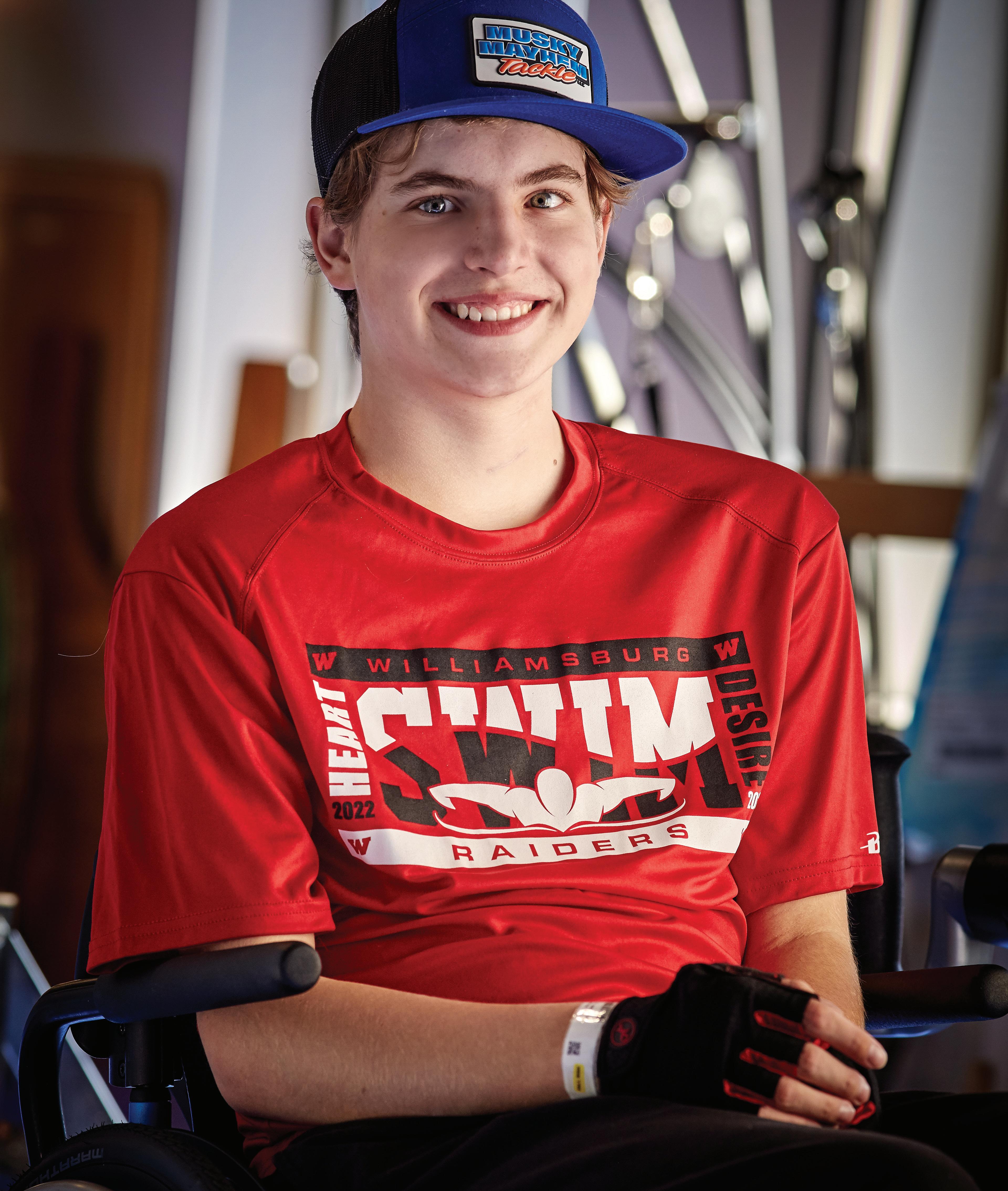
REHABILITATION
Nathaniel Crow finishes a physical therapy session at St. Luke’s Physical Medicine and Rehabilitation.
On a hot Iowa summer day, Nathaniel Crow was doing what he’s done hundreds of times — running and diving into his family pond outside of Williamsburg. The 17-year-old had finished work and wanted to cool off.
“I ran down the hill and did a racing dive into the water,” explained Nathaniel. “It’s a very shallow dive and when I came up, I couldn’t move my legs.”
Thankfully, his 13-year-old brother, Nelson, was swimming with him that day and noticed Nathaniel was struggling. He dragged his brother to shore.
“Nelson saved his brother’s life,” said Lisa Crow, the boys’ mom. “Nathaniel would’ve drowned if his brother wasn’t there. Nelson ran back to the house and told me that Nathaniel couldn’t feel his legs.”
Lisa and Nelson ran to Nathaniel, who was laying on the beach.
“As I was making my way to Nathaniel, I thought to myself that he had worked outside all day, in over 100 degree heat, so I thought it was something heat related,” shared Lisa. “As soon as I got to Nathaniel, I determined quickly it wasn’t related to the heat, and it was serious. I called 911.”
Acute Spinal Cord Injury
Nathaniel was transported to the hospital where it was determined he sustained an acute spinal cord injury to his C6 vertebra. He had two surgeries; the first to remove the pressure to his spinal cord caused by the broken vertebra, and the second to implant titanium rods for stabilization commonly known as a spinal fusion.
“When Nathaniel came to us at St. Luke’s Physical Medicine and Rehabilitation (PMR), he was essentially a quadriplegic,” recalls Kevin Komenda, St. Luke’s PMR senior physical therapist. “He had no leg movement. He would lose his balance sitting because he didn’t have the strength to sit without support. It was initially total assistance for all mobility. This is typical for someone who has had a cervical spinal cord injury. The interesting thing about Nathaniel was even with his challenges he could still feel his feet. He was able to tell during one of our tests if his toe was pointing up or down, so that sensation was getting through his spinal cord injury to his brain. That’s rare. It gave us hope that the signal from the brain to the muscles to move would get through as well.”
“It was hard to watch when Nathaniel first arrived at St. Luke’s how little he could do for himself,” recalled Lisa. “I remember thinking we had a long way to go for him to be independent, but he put in the work every day, for hours at a time, with physical, occupational and recreational therapy. There were days he’d have a bad night and not sleep well, or he’d wake up screaming in pain and I
would say to the caregivers, ‘I don’t think therapy is happening today’ and then half an hour later he would say, ‘let’s go.’ He put his mind to working hard and walking again.”
Regional Rehabilitation Leader
St. Luke’s is the regional leader in rehabilitation. The care team is made up of physiatrists, doctors who specialize in physical medicine, and rehab; psychology providers; along with nurses and therapists who work with the patient and family on an individualized plan that allows them to meet their goals.
“Within two weeks after Nathaniel arrived at St. Luke’s PMR we started to see significant progress,” shared James Pazour, St. Luke’s PMR senior occupational therapist. “His progression and transition between mobility devices in a short time doesn’t happen very often. I’ve been doing this job for nearly 30 years, and you rarely see this level of improvement. It’s been incredible to watch.”
“Things started really coming around for Nathaniel and almost daily he was able to move something new, do something different, grow stronger and with less pain,” explained Komenda. “We let him lead and challenged him each day. It has been awesome to be a part of his recovery.”
“We had this strong hope that someday Nathaniel would walk again but at the pace it happened I had no idea,” said Lisa.
“All the therapists at St. Luke’s were great and it was amazing watching his rapid progress and the work that went into it. For us the most important part of Nathaniel’s recovery has been the work of God. It’s the reason we never felt consumed and always had peace and hope through our strong faith in God and prayers from literally thousands of people across the world and the outpouring of support from our wonderful community.”
After spending three months at St. Luke’s PMR Nathaniel was able to walk out of the hospital. He continues his recovery in outpatient therapy at St. Luke’s and has returned to Williamsburg High School where he joined the archery team and returned to competitive swimming.
To watch a video and learn more about St. Luke’s nationally recognized Physical Medicine and Rehabilitation Center, visit bit.ly/PMRTour or call (319) 369-7331.

LiveWell Winter 2023 | 11
Nathaniel walks out of St. Luke's Hospital after a three-month rehabilitation stay.
ASK THE EXPERT
Love Your Career
“As a respiratory therapist I work with premature infants all the way to the end-of-life care,” said Farmer. “I work with physicians and teams in operating rooms, nursing units and during bedside procedures. Respiratory care is a rewarding career path. Every day I am lucky to do something I love so much.”
WHAT CAREERS ARE AVAILABLE IN HEALTHCARE?
When many people think of healthcare workers, they may first think of doctors and nurses, but there are dozens of professionals working at hospitals and clinics who also provide essential care to patients. We connected with three St. Luke’s team members who have been in their respective careers for a decade or more to learn how they arrived in their roles and why they love what they do.
“I became a respiratory therapist (RT) by a twist of fate, not really knowing what I wanted to do after high school, but knew I wanted to be in healthcare,” shared Monica Farmer, St. Luke’s respiratory therapy supervisor. “School wasn’t my favorite thing, but I wanted to push forward in my education. I went to Kirkwood knowing I could get a start on a bachelor’s degree, or a specialized track. The latter is what I chose. I loved the respiratory therapy program and highly recommend it.”
“I started out as a pharmacy major,” explained Cassie Hartgrave, St. Luke’s Hospital Specialty Laboratory manager. “Halfway through my first
semester I realized it wasn’t for me. I liked my classes and looking through a course catalog, I came across the medical laboratory scientist degree (MLS), which had a lot of the same courses. After learning more, I was sold on a new career path. I have been at St. Luke’s for 17 years and love working in the laboratory. I started as a generalist, and I am now a manager.”
“I switched careers ten years ago after an injury forced the change,” shared Marcus Cooper, St. Luke’s operating room certified surgical technologist (CST). “With the help of my wife, I concluded I had an interest in surgical procedures and completed the two-year program at Des Moines Area Community College (DMACC) receiving an Associates of Science Degree and Diploma from the Surgical Technology Program. I appreciate the opportunities for growth in this field.”
“I like that every day is different,” explained Hartgrave. “In the lab, we have strong relationships with the pathologists and other physicians. Everyone at UnityPoint Health takes time to get to know you personally and professionally. I also appreciate that hospital administration is supportive of acquiring the newest and best technology for the laboratory.”
“I honestly love my career,” shared Cooper. “I love seeing and being part of all the different surgeries and helping patients in the process. I appreciate the many doors and opportunities at UnityPoint Health that have been opened for me because I chose this career and organization.”
All team members encourage individuals considering healthcare as their first or second career to do some research, visit schools and pursue job shadow opportunities.
“Healthcare, and RT in particular especially with COVID, has made for a challenging few years,” reflected Farmer. “But if you are looking for a career in something you want to be proud of and want to go home each day knowing you made a difference, this is the place to be.”
Please consider joining our welcoming and supportive team at UnityPoint Health. Search online for a career you’ll love at bit.ly/CareerUPH.

12 | unitypoint.org
From the left: Cassie Hartgrave, Specialty Laboratory manager; Marcus Cooper, OR certified surgical technologist and Monica Farmer, respiratory therapy supervisor.
PROVIDING EFFICIENT CARE WITH THE HELP OF A SPECIALIZED APP
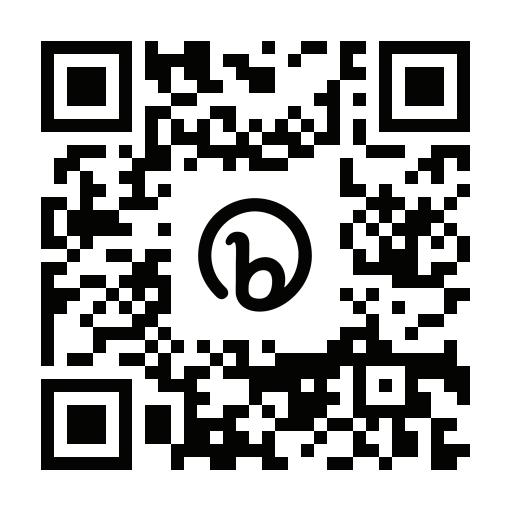
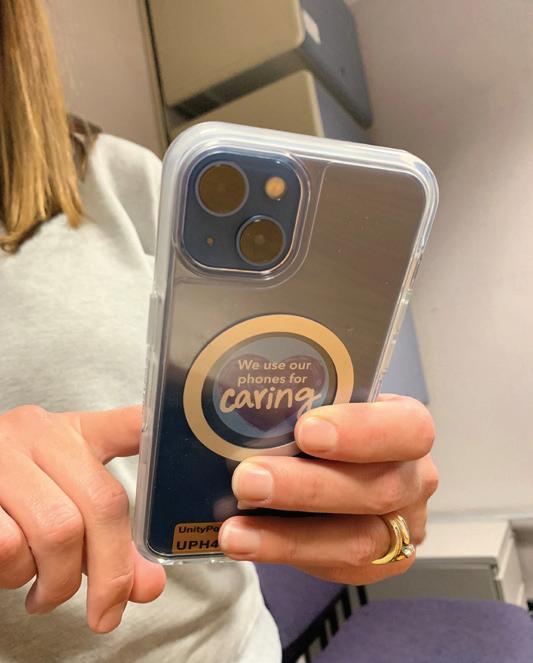
Bedside caregivers on some units at UnityPoint Health - St. Luke's Hospital are using Rover, an app from Epic, which is an electric health record software company. Using Rover, a hand held app to connect to your electronic medical record, empowers team members to reduce time spent documenting patient information at a computer and remain at the patient bedside by documenting care on a handheld device. Caregivers log into a hospital-issued cell phone at the beginning of their shift and utilize the Rover app to document from the palm of their hand. This technology promotes real-time documentation, increases team member satisfaction, and improves overall documentation workflows.
Hospital team members share that the app is helpful for charting medication, input and output, vital signs and blood administration, and they appreciate the ability to quickly enter patient information on the go. Orders and notes are all at the fingertips of the caregivers and can help with questions that healthcare providers, patients or family members may have.
IS JOINT REPLACEMENT SURGERY IN YOUR FUTURE?
Every year approximately one million individuals have knee or hip replacement surgery. As people age and demand a more active lifestyle, that number is expected to continue to climb.
Orthopedic experts can repair joint damage, whether it's from arthritis, an injury, or another degenerative disorder. St. Luke’s is nationally recognized for its hip and knee replacement programs, and leads the way in new, alternative surgery options to speed up healing and recovery.
We invite you to watch as Jeffrey Nassif, MD, an orthopedic surgeon with Physicians’ Clinic of Iowa, performs a robotic knee replacement surgery in St. Luke’s operating room. Dr. Nassif explains the process, who may need a joint replacement and talks about recovery after surgery.
WITWER CHILDREN’S THERAPY USING HORSE RIDING SIMULATORS
Patients at St. Luke’s Witwer Children’s Therapy (WCT) are benefiting from new equipment, which mimics that of riding a horse. St. Luke’s Foundation received a $17,281 grant from Variety – The Children’s Charity to purchase two MiraColt Horse Riding Simulators.

Prior to the COVID-19 pandemic, WCT offered hippotherapy, which according to the American Hippotherapy Association (AHA), refers to how occupational, physical and speech therapists use evidencebased practice and clinical reasoning in the purposeful manipulation of equine movement as a therapy tool.
Even before the pandemic there were barriers for patients and therapists to travel to a stable to use horses. Witwer therapists recently identified the MiraColt as a potential way to offer the benefits of hippotherapy within the clinic environment.
The MiraColt offers features other therapy equipment does not, such as side-to-side and forward and backwards motions designed to mimic the three-dimensional quality of a horse’s gait. Research has demonstrated it is possible to obtain similar benefits to gait, postural stability, balance, strength, and other therapeutic goals using a mechanical horse-riding simulator as compared to using a live horse.
The MiraColt Horse Riding Simulator is expected to help individuals with cerebral palsy (CP), autism spectrum disorder (ASD) and other related neuro-muscular conditions. This form of therapy has been shown to improve outcomes in mobility, balance, control of posture, walking, speaking and gross and fine motor skills.
Witwer Children’s Therapy is one of the largest outpatient pediatric therapy providers in Cedar Rapids and in Iowa. Witwer has two locations: one in Cedar Rapids and another in Hiawatha. Each clinic received a MiraColt and is currently the only therapy clinic in Iowa to utilize this equipment in therapy sessions.
LiveWell Winter 2023 | 13
YOUR HEALTH
FOR
SCAN & WATCH
St. Luke’s Heart & Vascular Center Expands for You
St. Luke’s expansion project will allow more people to receive St. Luke’s cutting-edge heart and vascular care. The $25 million project continues on-time and on-budget.
2023 PHASE 1
Adding a Second Electrophysiology
Lab: For pacemakers, implantable defibrillators and ablation procedures to correct Afib (irregular heart beat).
2024 PHASE 2
Adding a Third Vascular and Interventional Radiology (IR) Lab and dedicated heart prep/recovery areas: For imaging and biopsies, repair of aneurysms (ballooning vessels), and revascularization (restoring blood flow to blocked vessels).
Follow our expansion progress at unitypoint.org/heartcare
2024 PHASE 3
Focusing on Structural Heart and adding a large hybrid operating room (OR) near the Heart and Vascular ORs and ICU: For repairing defects and disorders of the heart structure, as well as catheter-based valve repair and replacement.
Non Profit Org. U.S. Postage PAID Cedar Rapids, IA Permit No. 91 We apologize for mailing problems such as duplicate copies. If you have questions or concerns about LiveWell magazine, please call (319) 369-7395 or email stlukescr@unitypoint.org. 1026 A Avenue NE | P.O. Box 3026 | Cedar Rapids, IA 52406-3026




















